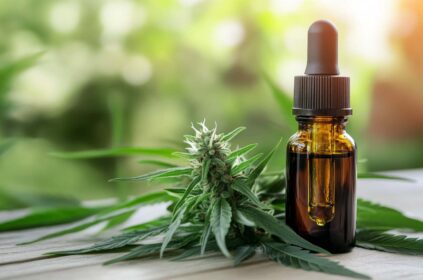CBD and Migraines: Potential for Pain Relief
Introduction
Migraines are not just headaches; they are intense, often debilitating neurological events that can dramatically interfere with daily life. Characterized by throbbing pain on one side of the head, migraines can also bring along a host of unsettling symptoms, such as sensitivity to light and sound, nausea, and even vomiting. Many people suffering from chronic migraines search for effective treatments, leading to a rise in interest surrounding CBD (cannabidiol) as a potential relief strategy. This article will explore the relationship between CBD and migraine management, examining current research, practical applications, and the benefits that this natural compound may offer.
Understanding Migraines
Migraines affect millions globally, with the World Health Organization estimating that over a billion people suffer from them. These episodes can last anywhere from a few hours to several days and can disrupt day-to-day activities completely.
Common migraine triggers include:
- Stress
- Certain foods (like aged cheese or chocolate)
- Hormonal changes, especially in women
- Environmental factors such as strong smells or changes in weather
Traditional migraine treatments vary from over-the-counter choices like acetaminophen and NSAIDs to prescription medications, including triptans and gepants, which can alleviate symptoms for some individuals but may not work for everyone. This leaves many seeking alternative or supplementary options.
The Role of CBD in Pain Relief
CBD, a naturally occurring compound within the hemp plant, has captured attention for its array of therapeutic properties. Unlike THC, the psychoactive component of cannabis, CBD is non-intoxicating, making it an appealing option for those hesitant about mind-altering substances. Research suggests several ways in which CBD may assist in mitigating migraine symptoms:
Anti-Inflammatory Effects
One of the hallmarks of migraines is neuroinflammation. CBD’s anti-inflammatory properties could potentially help reduce this inflammation, leading to decreased pain and discomfort during migraine attacks.
Interaction with the Endocannabinoid System (ECS)
The ECS is essential in regulating various physiological processes, including pain perception, mood, and inflammation. CBD interacts with the ECS, potentially helping to block pain signals and lessen the perception of pain attributed to migraines.
Serotonin Modulation
Serotonin is a neurotransmitter closely linked with mood and pain regulation. Fluctuations in serotonin levels can trigger migraines, and CBD has been shown to affect serotonin receptors, which might contribute to less frequent and less severe migraines.
Vasodilation and Blood Flow Regulation
Migraines often involve abnormal blood vessel constriction and dilation. Although THC is typically recognized for its vasodilatory effects, the comprehensive interaction of CBD with the ECS may also help normalize blood flow, potentially alleviating some migraine-related symptoms.
Neuroprotective Effects
The neuronal damage and oxidative stress linked to migraines can be mitigated by the neuroprotective properties demonstrated by both THC and CBD. This could enhance the overall resilience of the nervous system against migraine stimuli.
Anxiety and Stress Reduction
Stress and anxiety are frequent migraine triggers. CBD’s anxiolytic properties can help lower stress levels, potentially reducing the incidence of stress-related migraines.
Clinical Evidence and Studies
Several research initiatives have begun to shed light on the efficacy of CBD in treating migraines:
Vaporized Cannabis Study
In a clinical trial focusing on vaporized cannabis products, participants reported significant pain relief after administering cannabis containing a combination of THC and CBD. The results indicated that patients experienced not only pain relief but also improvements in their most bothersome symptoms. While CBD alone did not garner the same results, these studies highlight the potential of combination therapies involving CBD and THC.
Preclinical CBD Study
A preclinical study examined the effects of CBD in a model specifically designed to mimic migraine conditions. The findings indicated that CBD could prevent both episodic and chronic migraine-like symptoms in mice, suggesting it might be an effective abortive treatment during migraine attacks.
Practical Uses and Considerations
When it comes to integrating CBD into migraine management, there are several practical aspects to consider:
Forms of CBD
CBD is available in various formats, including:
- Oils and tinctures
- Softgel capsules
- Edibles (gummies, chocolates)
- Topical creams and balms
Each method of consumption offers different onset times and durations, allowing individuals to select what works best for their lifestyle and specific needs.
Dosage
Finding the right dosage can be crucial to success with CBD. There is no one-size-fits-all recommendation; starting low and gradually increasing the dose while closely monitoring symptoms is advisable. Consulting a healthcare professional familiar with CBD can provide personalized guidance.
Legal and Regulatory Aspects
In the United States, CBD products made from hemp plants containing less than 0.3% THC are federally legal. However, local laws may vary by state, so it remains important to check regulations based on your location.
Conclusion
While research into CBD’s efficacy for migraine relief is still developing, the compound’s anti-inflammatory, neuroprotective, and anxiolytic properties make it a promising candidate for managing migraine symptoms. As individuals continue to explore CBD as part of their migraine treatment plans, it’s essential to prioritize quality control by choosing high-quality products and consulting with healthcare professionals.
Actionable Tips
- Consult a Healthcare Provider: Always speak with your healthcare provider before beginning any new treatment, including CBD. They can offer insights regarding potential interactions with existing medications.
- Choose High-Quality Products: Select CBD products derived from reputable sources. Look for third-party testing to ensure potency and purity.
- Start with Low Doses: Begin at a lower dose and monitor its effects before gradually increasing to find your optimal dosage.
- Monitor Your Symptoms: Keeping a symptom journal can help track migraine occurrences and the effectiveness of CBD in your management strategy.
By incorporating CBD into your pain management approach, you may discover a significant reduction in migraine severity and frequency, ultimately improving your quality of life. As ongoing research continues to uncover the full potential of CBD, it remains an innovative area worth exploring for those in search of relief.




















